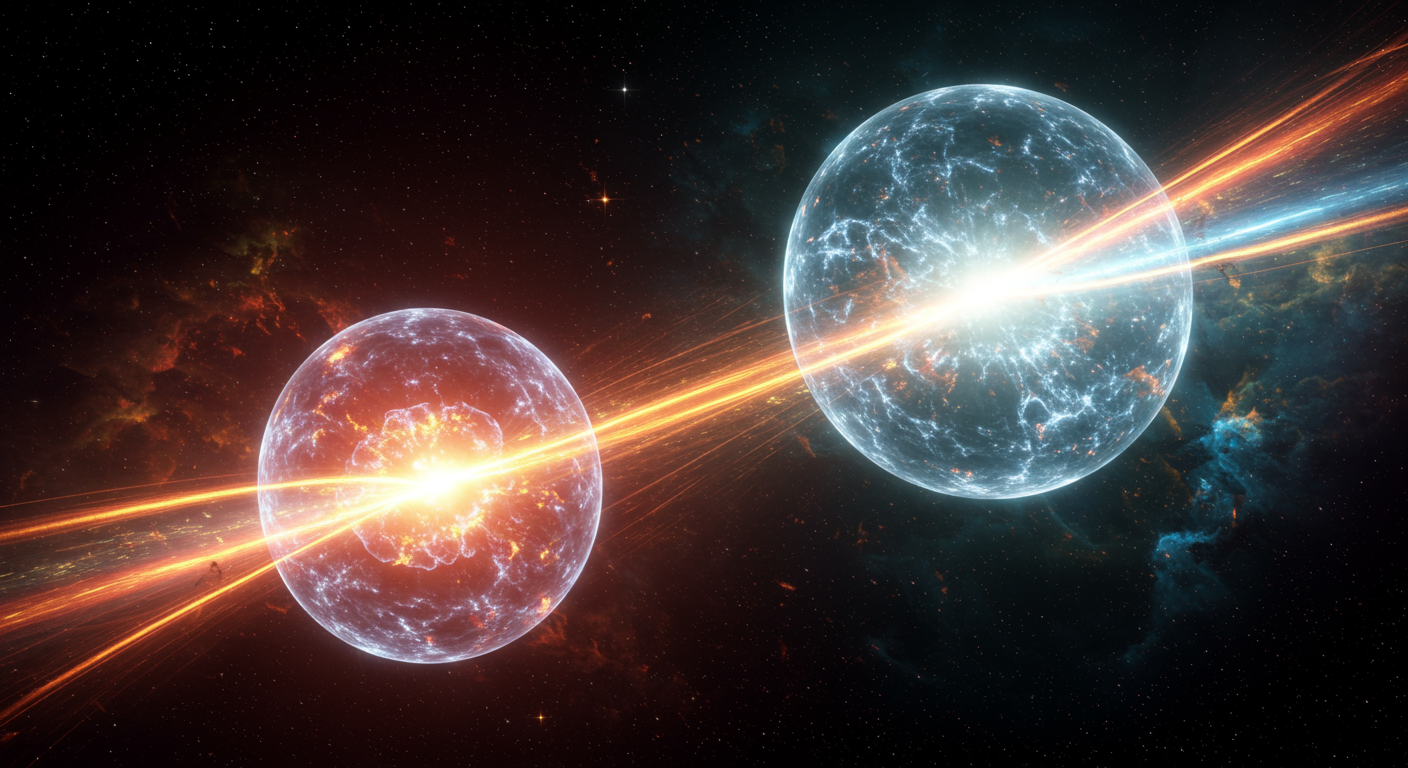Rapid and Late Cosmic Reionization Driven by Massive Galaxies: a Joint Analysis of Constraints from 21-cm, Lyman Line & CMB Data Sets

Unveiling the nature of the Universe’s first billion years, a period encompassing the Cosmic Dawn and the Epoch of Reionization (EoR), is one of the ultimate frontiers in modern cosmology. In our latest paper, 2504.09725, led by Peter H. Sims in collaboration with group members Harry T. J. Bevins, Anastasia Fialkov, Dominic Anstey, Will J. Handley, and Eloy de Lera Acedo, we present a powerful new analysis that synthesizes diverse observational data to paint a remarkably clear picture of this transformative era. Our findings suggest that the reionization of cosmic hydrogen was both a rapid and relatively late event, driven predominantly by star formation within massive galaxies.
A Multi-Probe, AI-Accelerated Approach
To constrain the complex processes of the EoR, we performed a joint Bayesian analysis combining multiple, independent cosmological probes. This multi-pronged attack on the problem leverages the unique strengths of different datasets:
- Cosmic Microwave Background (CMB): Constraints on the total optical depth ($\tau_\mathrm{CMB}$) from Planck (2020A&A…641A…6P) and on the duration of reionization ($\Delta z_\mathrm{re}$) from the South Pole Telescope’s (SPT) measurements of the kinetic Sunyaev-Zel’dovich effect (2021ApJ…908..199R).
- Lyman-Line Data: Measurements of the intergalactic medium (IGM) neutral fraction ($\overline{x}\mathrm{H{I}}$) from high-redshift quasar spectra and Lyman-alpha emitting galaxies.
- 21-cm Power Spectrum: Upper limits from the HERA, LOFAR, and MWA radio interferometers, which probe the thermal state and ionization structure of the early IGM.
A key innovation in our work is the application of Neural Density Estimation (NDE), a machine learning technique that allows us to efficiently incorporate the information from these disparate sources. By training an NDE on the results of previous complex analyses (such as the joint 21-cm constraints from B24), we can create a fast and accurate likelihood emulator. This approach is central to our group’s mission of fusing advanced AI with fundamental physics to accelerate discovery.
Key Findings: A Swift End to the Cosmic Dark Ages
Our joint analysis yields a precise and self-consistent model of reionization. The data show a strong preference for a scenario where star formation is hosted in massive dark matter halos, with a minimum circular velocity of $V_\mathrm{c} \gtrsim 50~\mathrm{km~s^{-1}}$. These massive galaxies drove a swift reionization of the IGM over a narrow redshift interval of $\Delta z_\mathrm{re} < 1.8$ (at 95% credibility). We have constrained the midpoint of this process, when the universe was 50% ionized, to a remarkably precise $z_{50} = 7.16^{+0.15}_{-0.12}$.
This “late and rapid” model stands in contrast to some previous scenarios, such as those favouring an extended reionization dominated by numerous faint, low-mass galaxies (e.g., 2019ApJ…879…36F). Our analysis robustly disfavours such extended histories, finding them inconsistent with the combined dataset.
Information-Theoretic Insights
A powerful feature of our Bayesian framework is the ability to quantify the information content of each dataset using the Kullback-Leibler (KL) divergence. This allows us to measure precisely how much each probe constrains our model parameters. We find that the Lyman-line data provides the most significant constraining power on the timing and duration of reionization (constraining $V_\mathrm{c}$ and $\tau_\mathrm{CMB}$). In contrast, the 21-cm upper limits primarily constrain the heating of the IGM, providing information on the X-ray and radio efficiencies of the first galaxies. The CMB data, while less constraining on its own, provides a crucial consistency check that reinforces the rapid reionization narrative.
Implications for the 21-cm Signal
The constraints on our astrophysical model allow us to generate a posterior predictive distribution (PPD) for the yet-to-be-detected 21-cm signals. Our results predict that both the global (sky-averaged) 21-cm signal and its spatial fluctuations (the power spectrum) are significantly reduced in amplitude and shifted to lower redshifts compared to the prior model space.
This has two major implications:
- Revisiting Existing Claims: The predicted signal amplitude is inconsistent with the deep absorption trough at $z \approx 17$ reported by the EDGES experiment (2018Natur.555…67B), suggesting that the EDGES result may be of non-cosmological origin. Our predictions align better with the null results from experiments like SARAS 3.
- Optimism for Future Detections: The shift of the 21-cm power spectrum peak to lower redshifts ($z \approx 7$) is promising news for experiments like HERA and the upcoming SKA. At these lower redshifts, contaminating foreground emission is significantly fainter, improving the signal-to-noise ratio and enhancing the prospects for a robust detection in the near future.
While our conclusions are robust within the context of our model, we acknowledge its dependencies, particularly the assumption of a mass-independent star formation efficiency. Future work, incorporating the wealth of new data from JWST, will allow us to build even more sophisticated models, further refining our understanding of the cosmic dawn.





Content generated by gemini-2.5-pro using this prompt.
Image generated by imagen-3.0-generate-002 using this prompt.